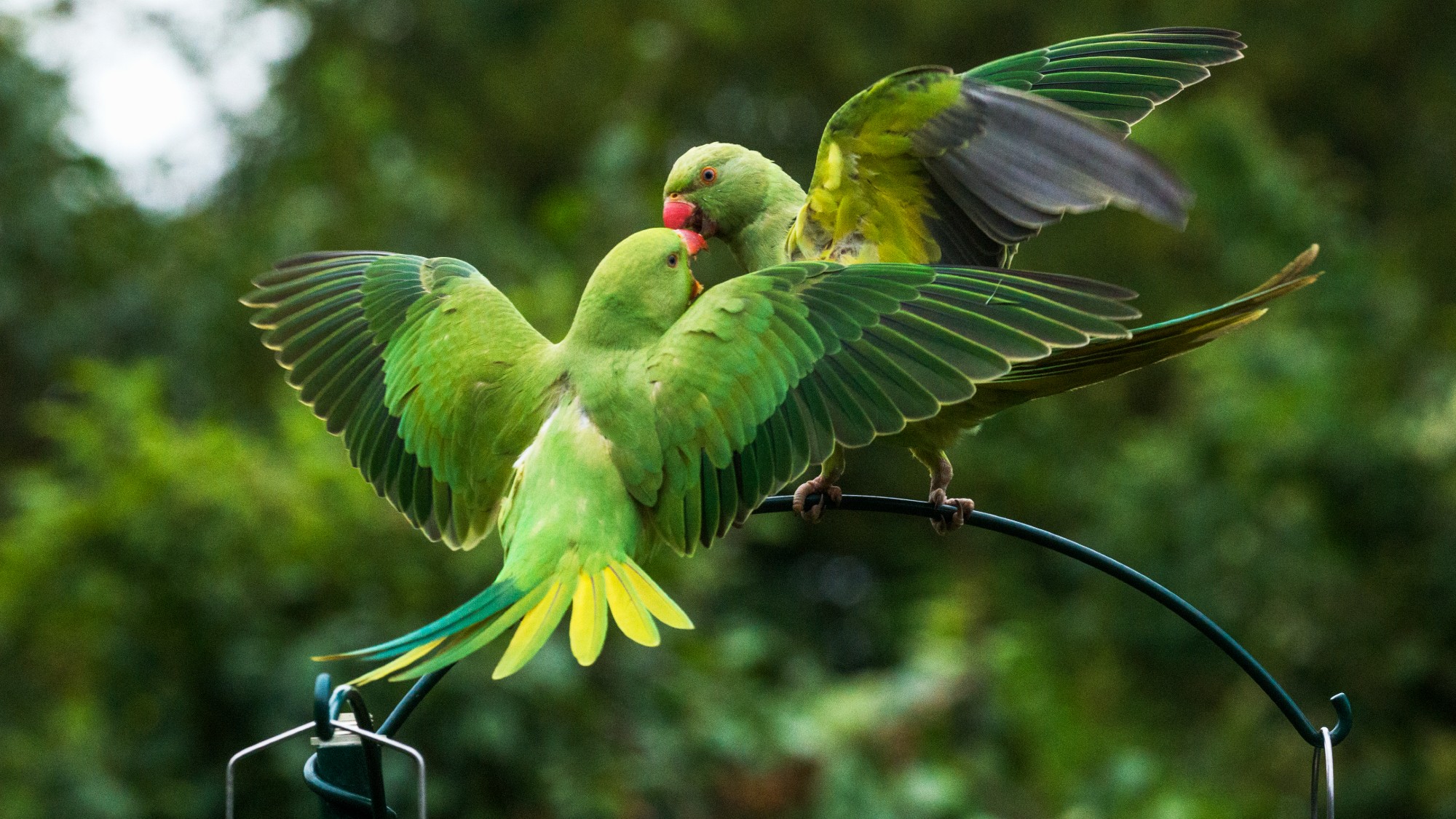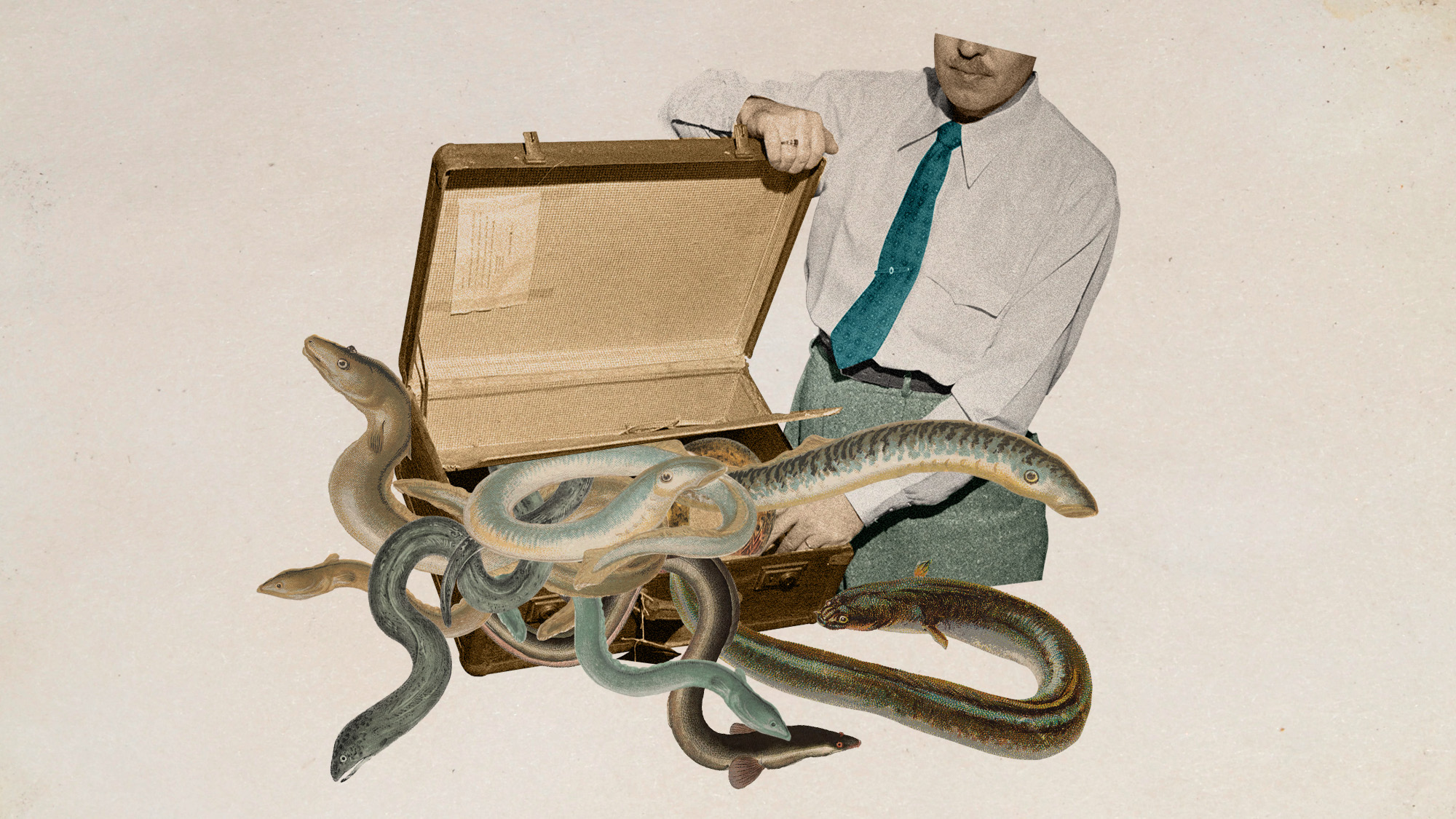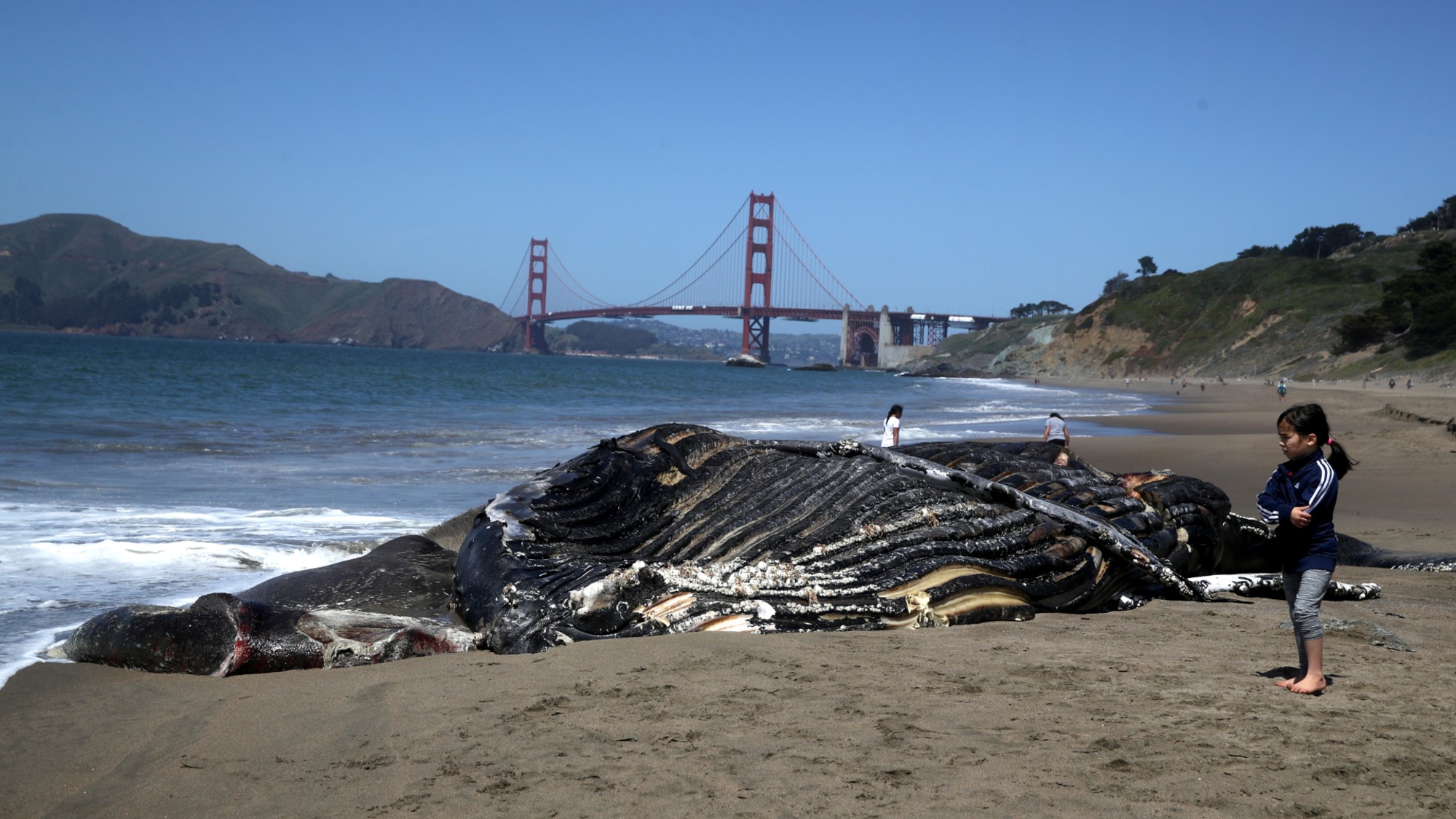England's great parakeet invasion
How did a parrot from the Himalayas become a common sight in southeast England?

Britain's only naturalised parrot, the ring-necked parakeet, Psittacula krameri, has firmly established itself in parts of the country. An exotic-looking bird, with a green body, red beak and a pink and black ring around its neck, it can grow to over 40cm.
Although originally native to the Indian subcontinent and sub-Saharan Africa, escaped parakeets have been sighted in the wild in England as far back as 1855. But feral populations weren't recorded here until 1968. Since then, numbers have soared: in the mid-1980s, there were about 500 in the UK; by the 1990s, that number had risen to 1,500; today, there are an estimated 32,000 parakeets (16,000 pairs).
They mostly roost in urban areas, particularly in London and the southeast – but there are populations in the Midlands and Manchester, and they have been spotted as far afield as Plymouth and Aberdeen.
The Week
Escape your echo chamber. Get the facts behind the news, plus analysis from multiple perspectives.

Sign up for The Week's Free Newsletters
From our morning news briefing to a weekly Good News Newsletter, get the best of The Week delivered directly to your inbox.
From our morning news briefing to a weekly Good News Newsletter, get the best of The Week delivered directly to your inbox.
How did they first arrive?
That's a question that has spawned plenty of urban myths. One has it that Jimi Hendrix released two caged parakeets in London's Carnaby Street in 1968, and the population grew from there. Another posits that London's first parakeets escaped from Shepperton Studios during filming of "The African Queen", the 1951 film starring Humphrey Bogart and Katharine Hepburn.
Or perhaps they escaped when debris from a plane crashed into the aviary of Syon Park in the 1970s, or when aviaries in Surrey were damaged by the "great storm" of 1987? There's even one theory that they escaped from George Michael's Hampstead townhouse during a break-in in the 1990s; the burglars supposedly wrecked his aviary. These theories, however, have been largely debunked.
So what is the explanation?
Parakeets have been popular pets in Britain for more than a century, and a 2019 study in the Journal of Zoology suggests that UK populations are likely "a consequence of repeated releases and introductions": escapes and releases have been reported regularly since 1900, sufficient over time to build up breeding populations. One explanation for repeated releases is public health scares over psittacosis, or parrot flu: first in 1929-31, and again in 1952. The illness can be transmitted to humans, sometimes with fatal consequences, and the outbreaks were covered feverishly by the media.
Even so, it wasn't until the 1980s that the first large colony was established, by the river in Kingston upon Thames. For years, parakeets were considered an exotic novelty of southwest London. But in the past 20 years or so, they've spread rapidly: from Richmond and Kew to Kensington Gardens and Hyde Park, then Hampstead Heath, into Hackney and, now, well beyond the M25.
A free daily email with the biggest news stories of the day – and the best features from TheWeek.com
Why have they spread so fast?
Although parakeets are often thought to be tropical birds, those in Britain are largely hardy creatures originating from the foothills of the Himalayas, and are quite able to cope with British weather. They're very happy roosting in the mosaic of gardens, parks, trees and older buildings found in urban areas, and are opportunistic feeders, devouring everything from seeds and fruit to flowers and tree bark. They can travel up to 15 miles to forage, and are enthusiastic grazers on bird feeders during the winter months.
They live for 30 or more years and mature early: they are prolific breeders, and can breed from six months; their mating season starts earlier than that of most other birds, in January. They also have few predators – though one study showed that London's small but growing peregrine falcon population eats them in large numbers.
Are they a threat to native species?
Parakeets have colonised much of western Europe: there are thought to be more than 85,000 of them living in Britain, the Netherlands, Germany, Belgium, France, Spain, Portugal, Italy and Greece. And scientists have expressed concern about their impact on native birds. Parakeets roost in large numbers, and aggressively defend their territory: they've been known to kill bats in tree hollows; and, in Seville, are displacing a rare bat species.
In Britain, their unusually early breeding season gives them an advantage over native species, such as nuthatches and woodpeckers, in the competition for nesting or roosting cavities. They have been observed chasing other birds away from feeders, and fighting with starlings and jackdaws; they also carry diseases such as chlamydiosis, which can infect other birds. For now, though, there is limited evidence that Britain's parakeets are having a significant impact on our native wildlife. Certainly it is very minimal compared with habitat destruction, pollution and other damage inflicted by humans.
Are there other issues?
Plenty. Voracious feeders, parakeets can strip trees of blossom in spring, and of fruit in summer and autumn. Farmers in Israel have reported them descending on fields in their hundreds, ravaging crops such as almonds, sunflowers and plums. In the US, where monk parakeets have caused fires by nesting on electricity pylons, authorities have humanely removed birds, eggs and nests.
The worry among some scientists is that these issues may come further to the fore if (or more likely, when) parakeet numbers continue to grow. And for residents of areas with big parakeet populations, the novelty of the birds' shrieking calls might quickly wear off.
Should numbers be stemmed?
There are currently no plans for a cull of parakeets in Britain, though some conservationists have suggested that action to reduce numbers will be needed, such as tightening laws on possession and import (as has happened in Spain), or even, controversially, shooting them. A 2019 poll in the journal NeoBiota found that – as with other immigrants – younger Britons and city-dwellers were more positive towards parakeets than older, rural-based residents.
-
 How will climate change affect the UK?
How will climate change affect the UK?The Explainer Met Office projections show the UK getting substantially warmer and wetter – with more extreme weather events
-
 Are we entering a ‘golden age’ of nuclear power?
Are we entering a ‘golden age’ of nuclear power?The Explainer The government is promising to ‘fire up nuclear power’. Why, and how?
-
 Eel-egal trade: the world’s most lucrative wildlife crime?
Eel-egal trade: the world’s most lucrative wildlife crime?Under the Radar Trafficking of juvenile ‘glass’ eels from Europe to Asia generates up to €3bn a year but the species is on the brink of extinction
-
 How climate change poses a national security threat
How climate change poses a national security threatThe explainer A global problem causing more global problems
-
 How 'freakosystems' are becoming the norm
How 'freakosystems' are becoming the normThe explainer Ecosystems are changing permanently
-
 What do heatwaves mean for Scandinavia?
What do heatwaves mean for Scandinavia?Under the Radar A record-breaking run of sweltering days and tropical nights is changing the way people – and animals – live in typically cool Nordic countries
-
 The revived plan for Trump's border wall could cause problems for wildlife
The revived plan for Trump's border wall could cause problems for wildlifeThe Explainer The proposed section of wall would be in a remote stretch of Arizona
-
 Spiking whale deaths in San Francisco have marine biologists worried
Spiking whale deaths in San Francisco have marine biologists worriedIn the Spotlight Whale deaths in the city's bay are at their highest levels in 25 years


